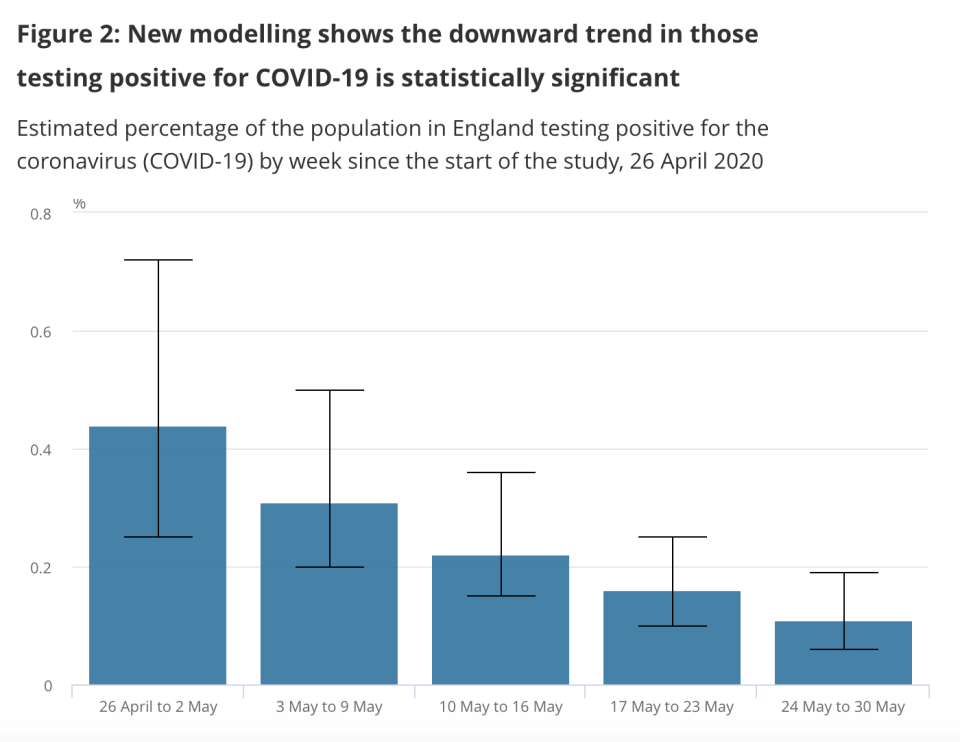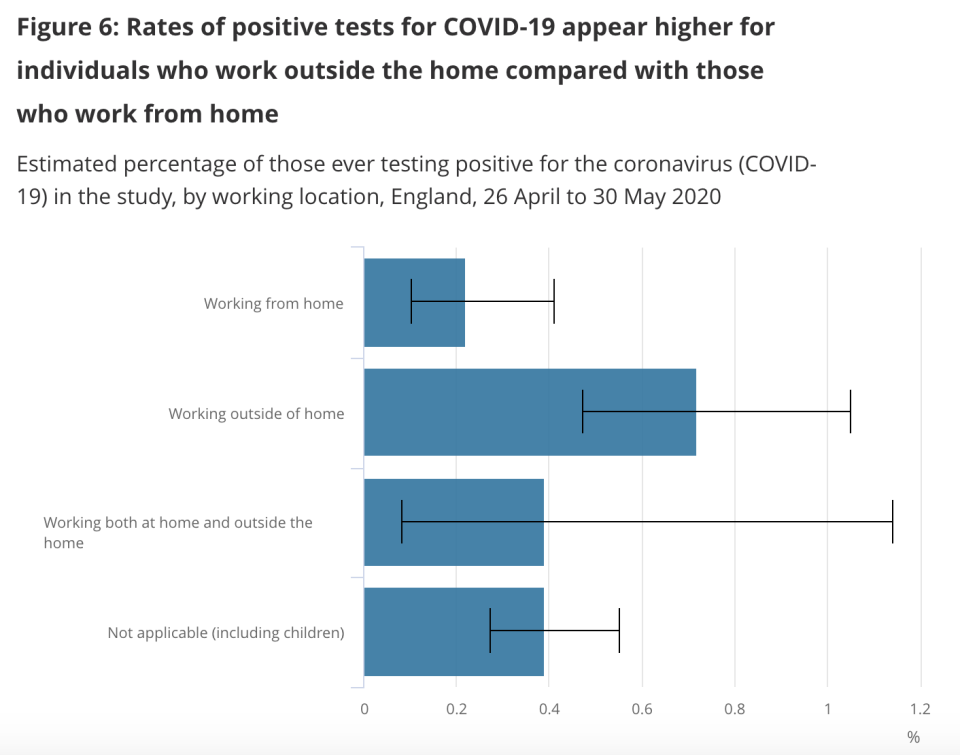Coronavirus: Fewer people testing positive for COVID-19 as pandemic appears to ease, new data reveals

An average of 53,000 people in England had COVID-19 any one time between 17-30 May, marking a decrease in positive tests in recent weeks.
New data from the Office for National Statistics (ONS) shows a fall in the number of cases from the last estimate, which assessed that during 11-24 May 133,000 people in England had the virus at any given moment.
“Modelling of the trend over time shows evidence that the number of people in England testing positive has decreased in recent weeks,” the ONS said.
The data, based on tests performed on 19,723 people in 9,094 households, shows there is a “clear downward trend”.

Between 26 April and 30 May there were an estimated 39,000 new infections every week in England, or 0.07 new cases per 100 people.
Professor Keith Neal, emeritus professor of the epidemiology of infectious diseases at the University of Nottingham, said: “This set of data shows a number of interesting a key findings.
“The rate of infection continues to decline and is half what it was two weeks ago.
“Changes over a longer period are now statistically significant. This is highly compatible with the fall in diagnosed cases.”
Prof Neil said the data suggests the new test and trace programme should be able to cope with the current level of infection, and that the main issue is people not getting tested when they display symptoms.
He added: “The main limitation of the study is the small numbers testing positive gives wide confidence intervals. No study is perfect but by following the same group of people it is a very powerful tool to identify the trend.”
The figures show there is “no evidence of differences in the percentage of men and women testing positive for COVID-19”.
The ONS also found it is “not possible to say with confidence that there is any difference in the proportion of individuals in different age groups testing positive for COVID-19”.
The data shows that 1.87% of people who worked in patient-facing healthcare or social care roles tested positive, a significantly higher number than the population at large.
These include NHS professionals and nursing home staff.

A higher percentage of people who work outside of home also tested positive at some point in the outbreak.
0.7% of those who work away from home tested positive, compared to 0.2% who can work from home.
Of those who work at home and outside, 0.4% have been confirmed to have contracted the coronavirus at some point.
Prof Neal said: “The most important finding is the risk to those in patient-facing occupations have a much higher rate of COVID-19 detection.
“This significantly higher figure suggests that a significant part of the current COVID-19 epidemic may be an infection control issue rather than a series of community outbreaks.
“The control strategies are different in hospitals and care homes which requires infection control whilst community transmission requires social distancing and contact tracing.”
Coronavirus: what happened today
Click here to sign up to the latest news, advice and information with our daily Catch-up newsletter
Read more about COVID-19
How to get a coronavirus test if you have symptoms
How easing of lockdown rules affects you
In pictures: How UK school classrooms could look in new normal
How public transport could look after lockdown
How our public spaces will change in the future
Help and advice
Read the full list of official FAQs here
10 tips from the NHS to help deal with anxiety
What to do if you think you have symptoms
How to get help if you've been furloughed

 Yahoo Movies
Yahoo Movies 
